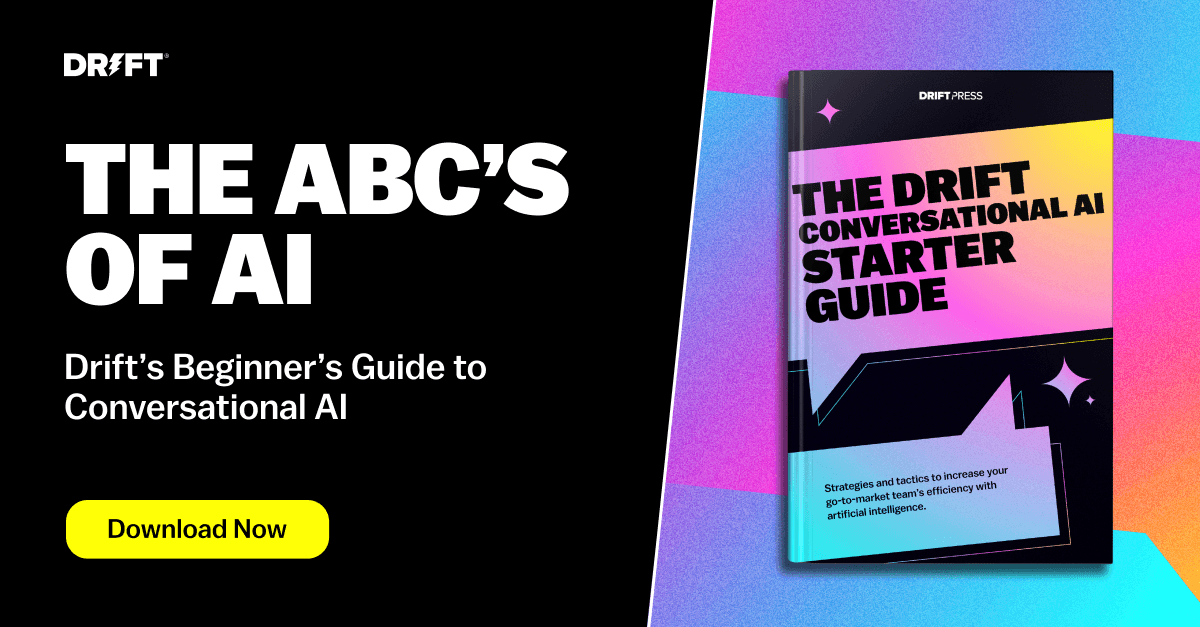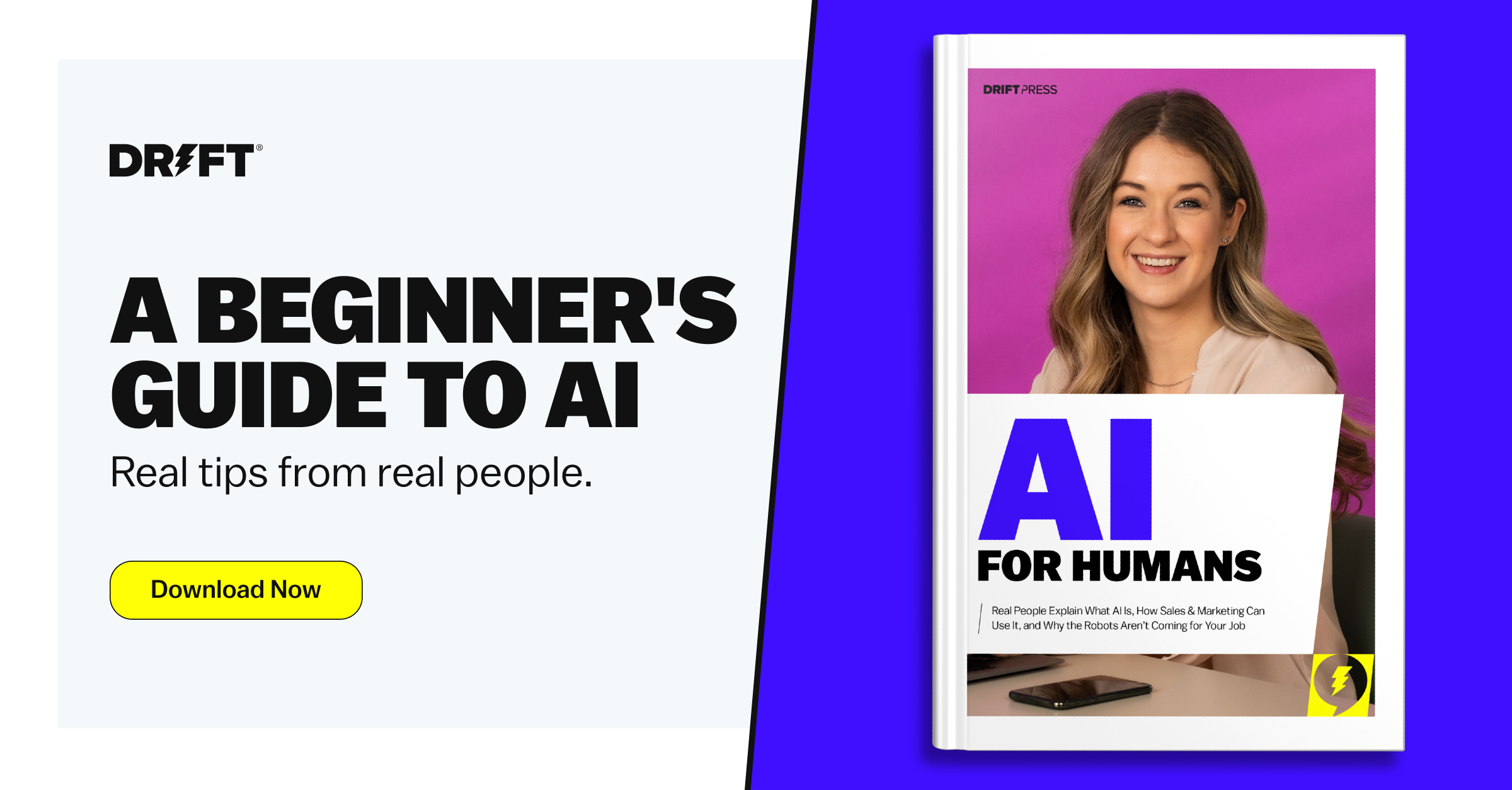Although artificial intelligence (AI) has become something of a buzzword in our daily lives, for B2B companies, it’s more like a loose puzzle piece.
While we know how valuable AI can be to our marketing and sales strategies, many of us are not quite sure where it fits in. With the variety of AI tools and use cases out there, it’s hard to know exactly where you should slot AI into your bigger go-to-market puzzle to drive the most benefits for your business.
That said, early adopters are already getting ahead of the competition. In fact, according to McKinsey, companies who have invested in AI are seeing a sales uplift of 10% to 20%.
It’s clear that, as AI adoption grows, those who lag behind will miss out on a significant amount of opportunities and revenue. That’s why it’s crucial that you figure out exactly where AI will fit in best with your overall strategy, so you can drive greater revenue.
To help you answer this question, I joined Latané Conant, CMO of 6sense, on a webinar about mastering the relationship between AI, marketing, and sales at your company. Below, you’ll find four key ways you can leverage AI in your marketing and sales strategies to help you get ahead of the competition.
If you’d like to watch the full webinar recording, click here. Otherwise, keep reading for all the insights 💡
1. Enhancing Personalization
According to McKinsey, 71% of today’s consumers expect companies to personalize at least some part of their interactions — and 76% of them get frustrated when this doesn’t happen. Simply put, in today’s buying landscape, the risk of churn is too high to push personalization aside.
As Latané sees it, the problem with creating personalized experiences today is that many companies struggle with knowing which accounts are on their website and what they are looking for. On average, only 3% of website visitors will fill out a form to tell a company who they are and that they are interested in your solution.
Without insight into who is on your site and what they’re engaging with, it’s hard to be confident that the messages you send are ones that will resonate. Luckily, AI can help you build some of that confidence. For example, you can leverage AI to run multivariate tests across your website to tell you what messaging is resonating best with your visitors. You can also implement AI-powered chatbots across your website to not only engage with site visitors 24/7/365, but to store the context of every conversation in a database that you can access to learn more about your site visitors’ and their buying journeys. With this information on-hand, you’re able to better understand your buyer, and thus be more prescriptive in how you talk to them.
The result? You meet buyer expectations without burning out your team or your budget.
2. Optimizing the Sales Process
In sales, time is of the essence. So, why waste energy reaching out to every possible account or trying to guess what exactly they need?
With AI, you can take a lot of the guesswork out of the sales process, so that you can optimize the buying journey for both you and your buyers.
One way you can do this is through segmentation. By looking at historical sales data, AI can identify accounts that best fit your ideal customer profile (ICP) or categorize them by factors like firmographics and browsing patterns. These segments can then serve as a guideline for your sales reps on how to cater their outreach.
For example, you know that an enterprise customer will not be ready to buy immediately, likely needing multiple, one-on-one touches to make a decision. So, to build rapport with that account, a rep might send them a personalized note to invite them to a VIP event. On the other hand, a high-velocity account isn’t going to want those kinds of touches because they’re already really interested in your solution, which means it’s more effective to suggest a free trial via email.
If you’re worried about all this information causing analysis paralysis, AI can help with that, too. Using your account’s previous activity, it can generate an AI engagement score that tells you which accounts are most likely to convert so that your reps can prioritize those accounts. Taking it a step further, the AI can use that same data to recommend which contacts the rep should reach out to within those accounts and what to say — like mentioning a specific pain point or focusing on a particular solution.
Through all of these optimizations, AI moves the sales process away from a guessing game into a more data-driven approach, which ultimately saves time for both your reps and your buyers.
3. Scaling Conversations with Chatbots
With the growing demand for immediate responses, chatbots have become critical to increasing efficiency and customer engagement. But AI takes it to the next level.
Because AI chatbots allow site visitors to ask questions in their own words, you can easily scale your buyer and customer conversations without sacrificing the quality of your service. This means that, no matter the day or time, your site visitors can immediately get the answers they are looking for.
“In an ideal world, would it be the AE that would step in [to a chat conversation]? Yes. But we don’t always live in an ideal world. And, you know, whether it’s the middle of the night, early morning, holiday, to be always-on and never missing a signal is really, really powerful.”
Latané Conant, CMO, 6sense
With the always-on experience that AI chatbots offer, you can leverage conversations to support your sales team, as well as your support team. Some of the most effective use cases for AI chatbots include:
- Resolving issues: If a customer runs into a problem while your team is offline, the AI chatbot can surface relevant help docs so the customer can try to resolve the issue on their own.
- Booking a meeting: While any traditional chatbot can drop a calendar link in chat, with AI, you can use the context of the conversation to ensure that the buyer is setting up a meeting with the right rep for their needs.
- Learning about a product: An AI chatbot can answer open-ended questions about your brand and products — and it can continue to provide relevant information based on what the visitor says they are most interested in.
This goes to show that, if you build and execute a conversational strategy that is powered by AI, it can almost replace your website’s navigation.
All-in-all, AI chatbots can help you boost engagement, speed up the sales cycle, and drive more revenue faster. And our numbers back it up: Drift data shows that customers who integrated AI into their chatbot strategy saw a 30% increase in pipeline with 30% less work for their chat teams.
4. Supporting the Human Experience
A lot of people think that using AI means taking all humans out of the picture. But this is far from the truth — in fact, the key to creating the best customer experience is to have humans and AI work together.
The best way to think about AI is as a fallback to the human experience. As Latané puts it:
Humans are not a hundred percent reliable. We’re just not. And so, I think of AI as our net. There are a lot of places where I would rather a human … be in charge of that touchpoint. But, I always design a stop gap.”
Latané Conant, CMO, 6sense
The best AI is one that shortens the distance between you and your buyers and helps you drive more engagement. Generative AI can jumpstart your marketing and sales efforts by generating messaging that mimics your brand’s voice.
Although AI is always getting better and better at what it does, it’s only as good as the data it’s feeding off of. To avoid inaccuracies and hallucinations, it’s crucial that you leave humans in the loop to check the work that the AI is doing, keep your data clean, and train it to best fit your brand. By doing this, you ensure that your team can rely on AI to do some of the heavy lifting, so that they can focus on creating a more personalized and human experience that drives more revenue.
Final Thought
The fact of the matter is that AI in B2B marketing and sales is here to stay. And that’s a good thing.
Because, by leveraging a Conversational AI platform in your marketing and sales strategies, you open up your go-to-market strategy to a wide range of new opportunities that you may not have known were even there. With all of the information and improvements that AI provides, you’ll be equipped to deliver more effective personalization, boost your speed-to-lead, and make your team’s — as well as your buyers’ — lives a whole lot easier.
Ready to embark on your own AI journey? Get started with The Drift Conversational AI Starter Guide or chat with us now.








